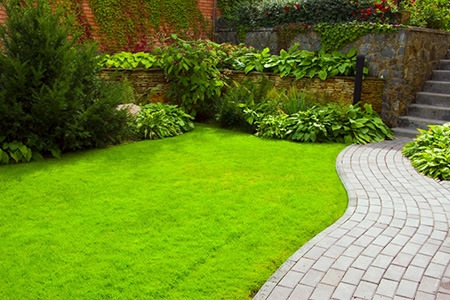Having a lawn in your home can be both rewarding and challenging. For those who love gardening, it can be rewarding because it provides an opportunity to pursue their passion of growing plants and flowers. At the same time, it can be challenging because of the responsibilities involved particularly when it comes to maintaining the lawn throughout the year.
Contrary to what many people think that keeping a healthy lawn means using fertilizers or artificial grass, it is possible to do it the natural way. In fact, frequent use of fertilizers can lead to rapid growth of grass which attracts more insects and causes diseases in plants. If you must use it, make sure to choose only the organic kind. Ideally, the use of chemicals should be limited to once a year only notably during the fall (October or November depending on your location).
The same is true with pesticides and insecticides. They should be avoided if possible. They’re considered killer chemicals that harm even the earthworms and good microbes which are beneficial to the soil.
Watering the Lawn
During the hot summer months, it is not necessary to water the grass frequently or on a daily basis. The experts point out that even though the grass leaves turn green, their roots stay alive for months as long as they are watered deeply.
The best way to keep a green lawn during summer is to run your sprinkler for an hour once or twice each week. This is considered a better option than watering the grass for a few minutes every day.
Mowing the Lawn
You would know your lawn is healthy when you see tall grass. Taller grass prevents the growth of weeds, keeps the soil cooler and locks moisture in. As such, it would be a good idea to mow your lawn at the highest setting to cut only a third off the grass. This will maintain your grass at a height of two and a half to three inches.
Additionally, it’s best to mow in different angles (45 degrees and 90 degrees) and alternate your mowing pattern. And do keep your blade sharp at all times.
When you observe some bare spots, make sure you apply grass seeds. During spring or early fall, rye, fescure and the Kentucky bluegrass variety are recommended. In the summer, meanwhile, Bermuda or Zoysia grass are best to use.
Aerating the Soil
Other than water, grass particularly its roots also need oxygen. This is the reason why you need to aerate your lawn as well to allow water, nutrients and fertilizers to penetrate the soil deeper. Aerating also provides more space for roots to grow and absorb moisture.
Rent a gas-powered aerator to do this task.
Image via doityourself
